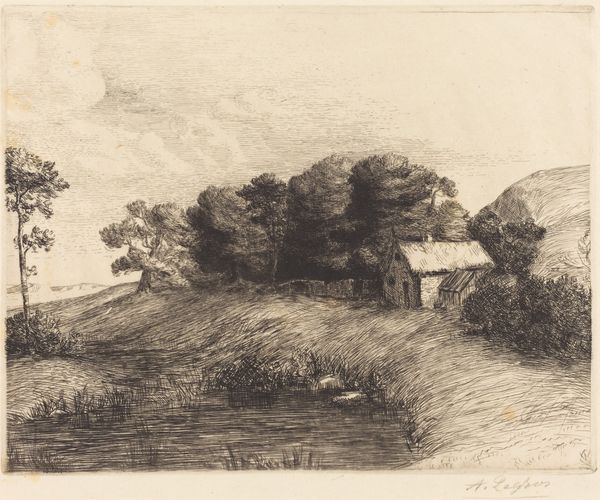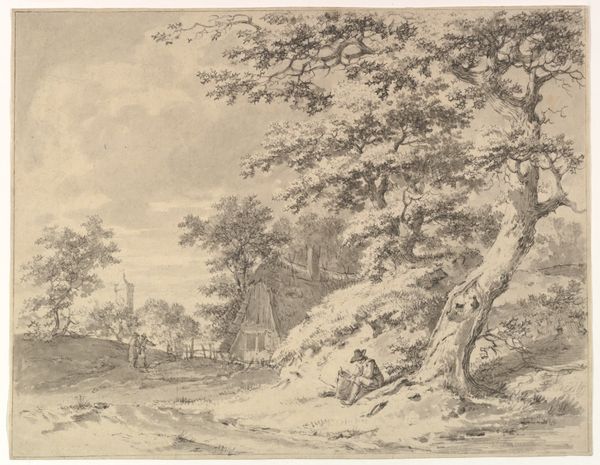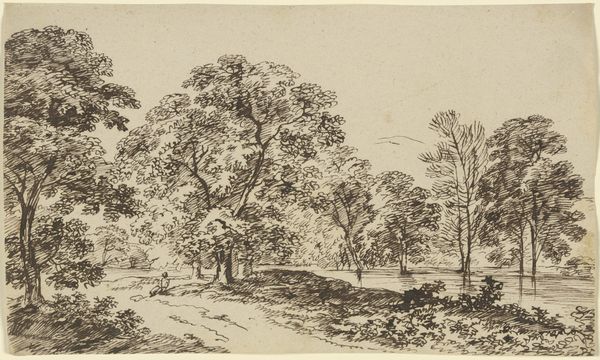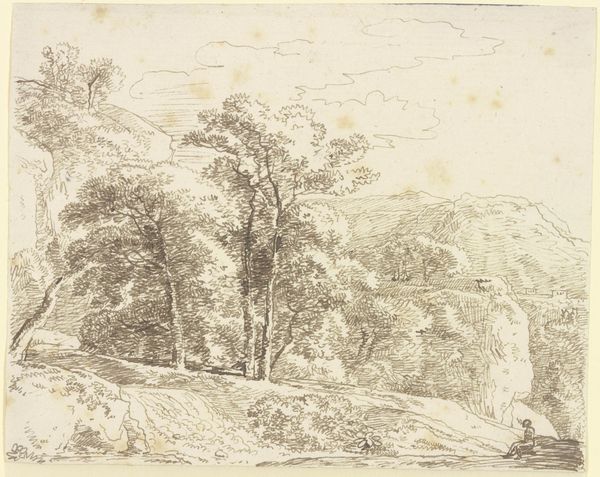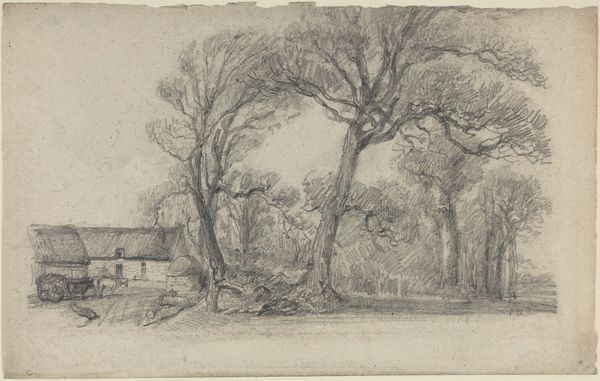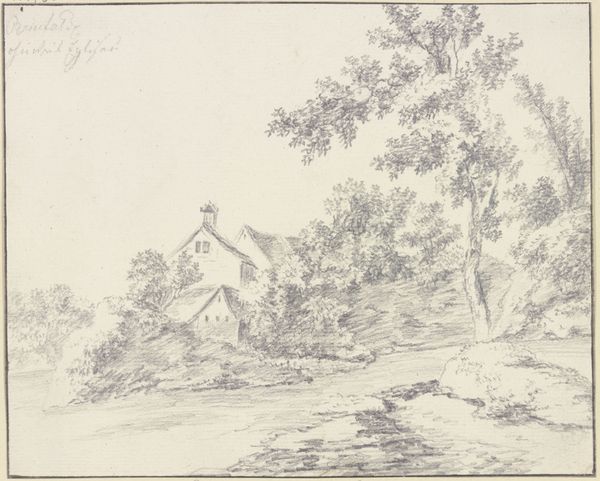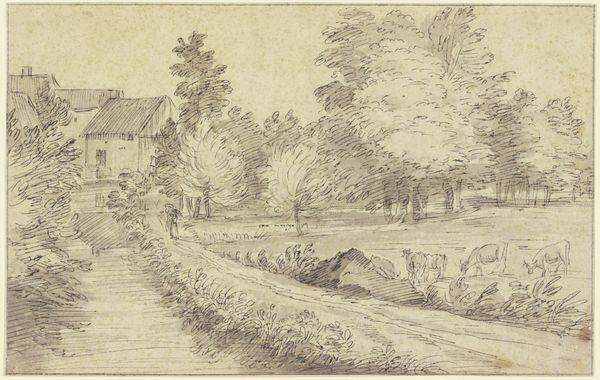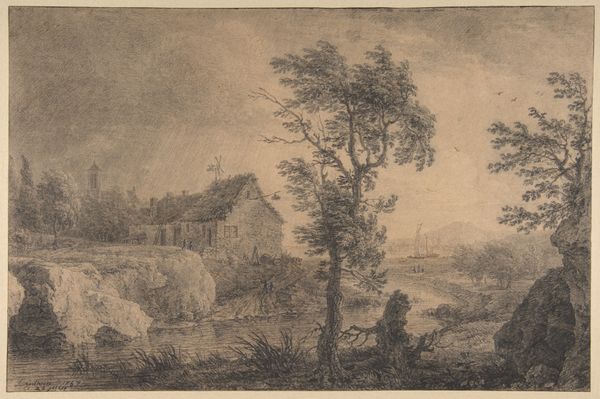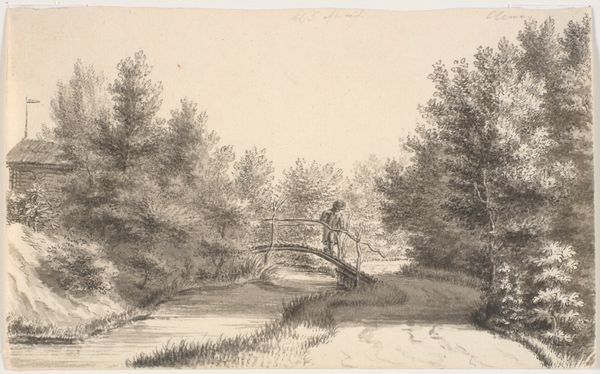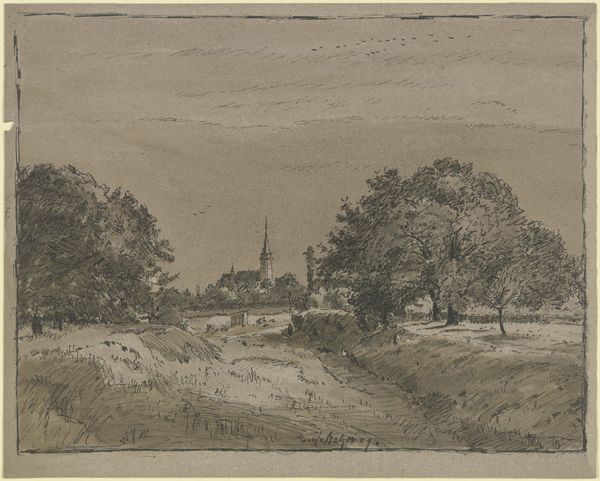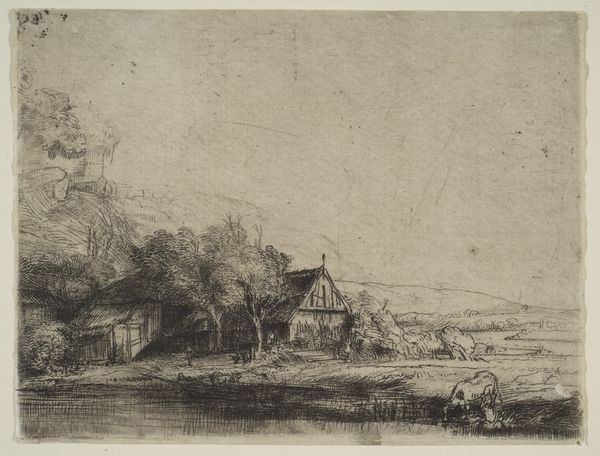
Landstraße durch den Wald, rechts unter hohen Bäumen auf einem Abhang eine Hütte
0:00
0:00
drawing, paper, ink, pencil
#
drawing
#
baroque
#
landscape
#
paper
#
ink
#
pencil drawing
#
pencil
Copyright: Public Domain
Curator: Welcome to the Städel Museum. We're standing before a captivating landscape drawing. Its title, "Landstraße durch den Wald, rechts unter hohen Bäumen auf einem Abhang eine Hütte," translates to "Country Road Through the Forest, a Cabin on a Slope Under Tall Trees on the Right." Editor: It feels so meticulously observed. There's a beautiful interplay of light and shadow creating a kind of melancholic harmony across the scene. The strokes are delicate yet incredibly descriptive. Curator: Precisely! Attributed to Jacob Esselens, it's a striking example of baroque landscape rendered in ink and pencil on paper. We know Esselens was active in the mid-17th century, a period of great mercantile expansion. These images become popular as records, celebrations even, of the newly owned landscapes. Editor: The use of simple materials like ink and pencil underscores the connection to the land. There is something so immediate about sketching. It feels connected to the artist's labour. This work has a different feel than an oil painting from the same period that evokes a sense of grandiosity and even power structures through use of materials. Curator: I can see that. Though, notice how he’s constructed a visual hierarchy, leading our eye from the foreground to the distant horizon. The placement of the cabin on the right creates an appealing composition and focuses the viewer’s attention to a man-made structure existing harmoniously with nature. Editor: Agreed, but the cabin itself—its rough-hewn form, nestled on the edge of the trees—suggests perhaps not just harmony, but a negotiation with the landscape. The landscape itself looks well travelled with at least a pair of people strolling by along the water in the distance. The drawing doesn't just depict an idyllic scene, but highlights labour and movement. Curator: An interesting observation! The ink, so precisely applied, captures both the textures and structural intricacies within the frame, while still being functional as it probably was mass produced. Editor: Exactly! And to consider the artist’s social positioning is fascinating. Perhaps commissioned by wealthy landowners who had the means to control access and use of landscape. I’d love to understand what paper was being used, who produced the ink, etc. to better understand the socio-economic status of not just the commissioner, but the artists creating them. Curator: Well, I hadn’t quite thought of it that way. I was stuck looking at the lines and their relationship to each other! Editor: Both very important lenses through which we understand Esselen’s work. Curator: Thanks for helping me see that today!
Comments
No comments
Be the first to comment and join the conversation on the ultimate creative platform.

